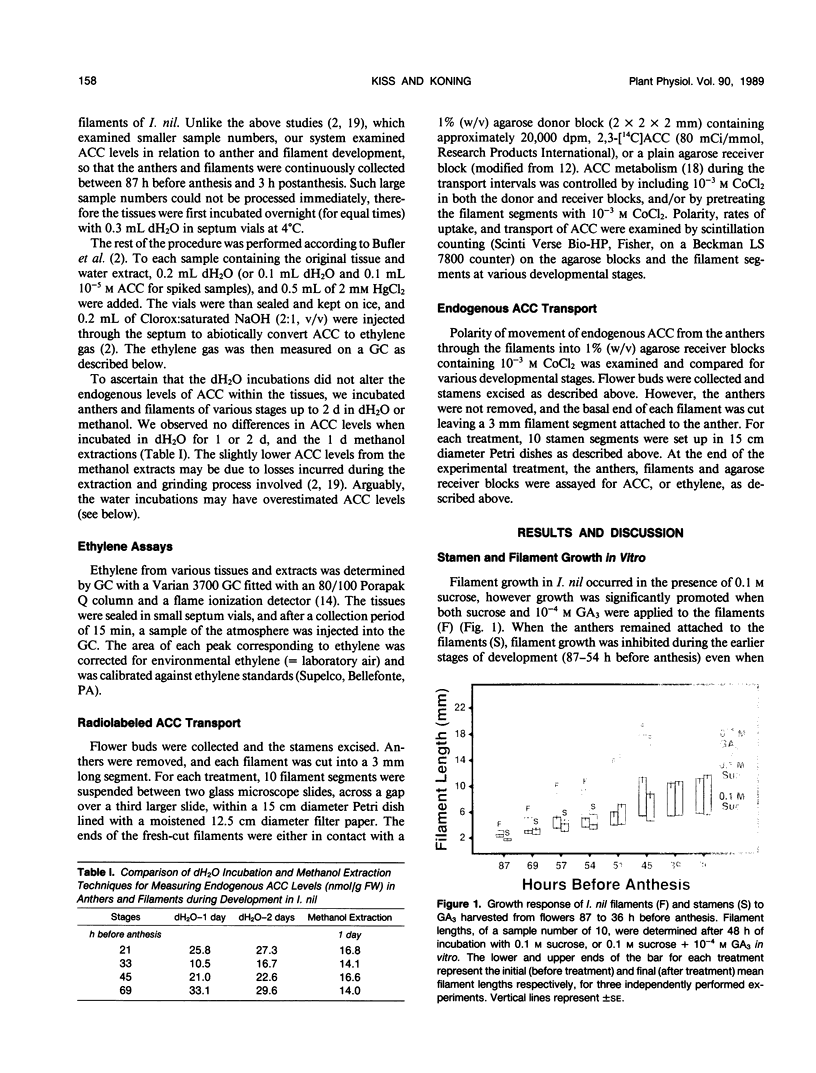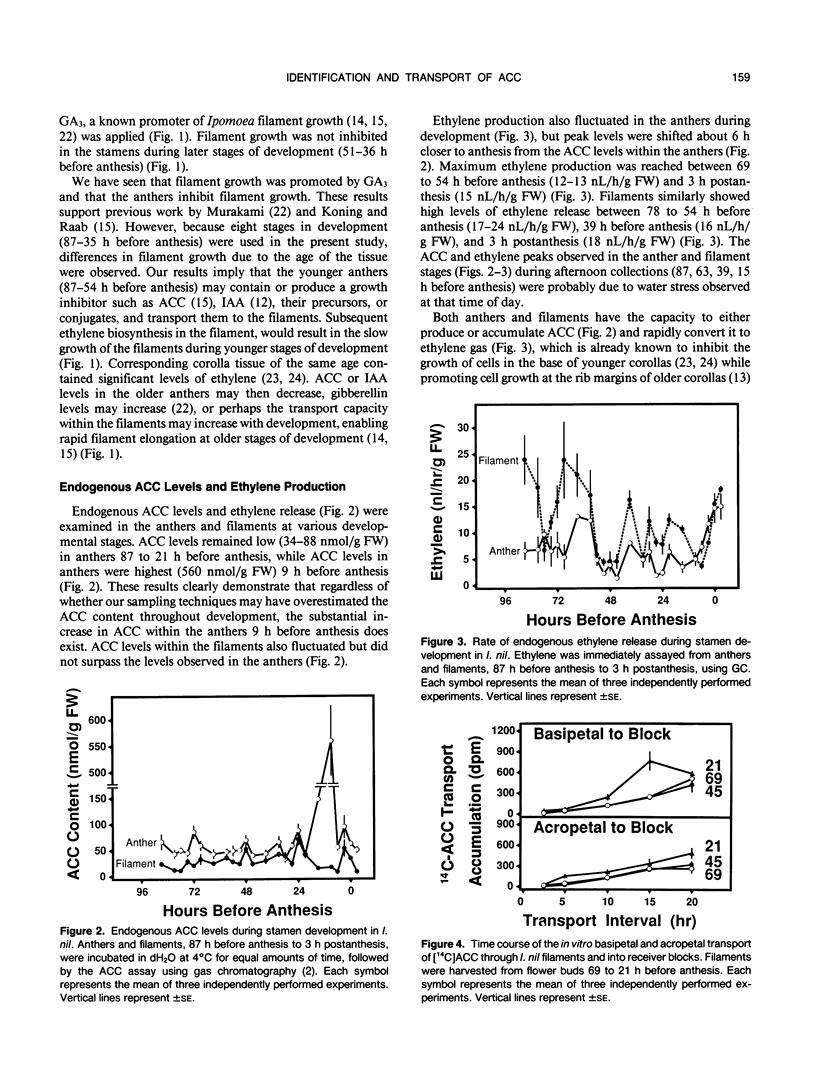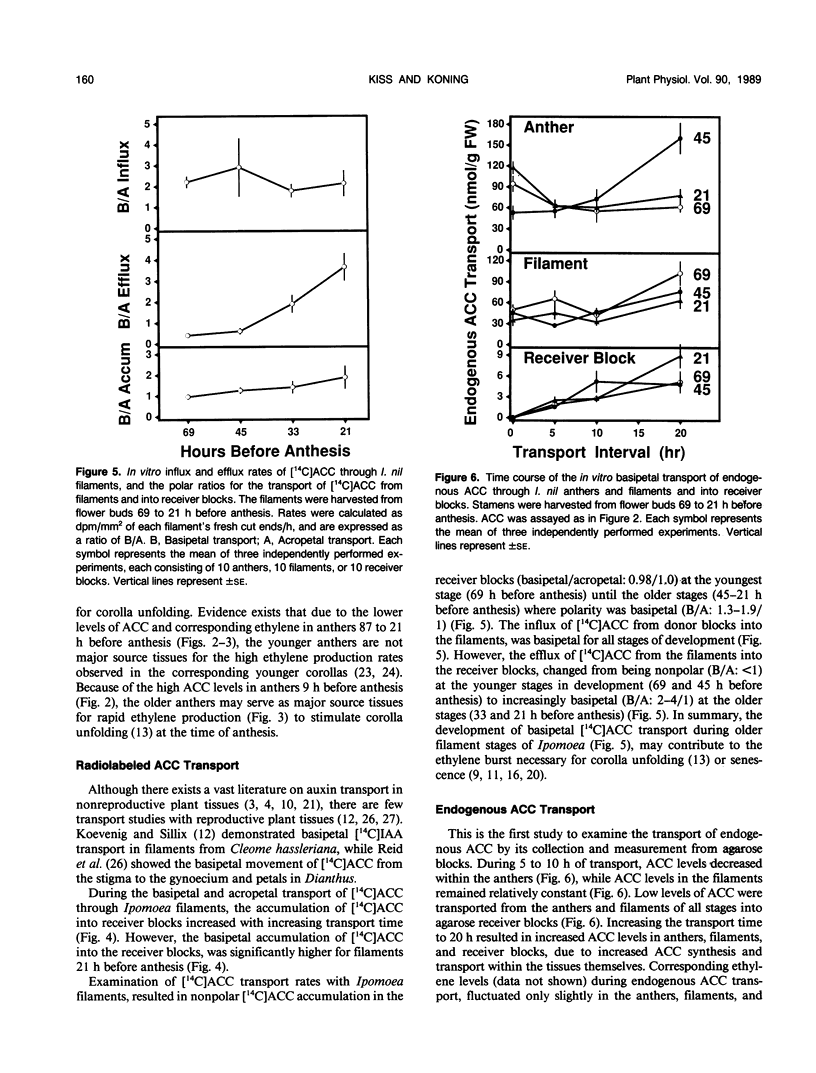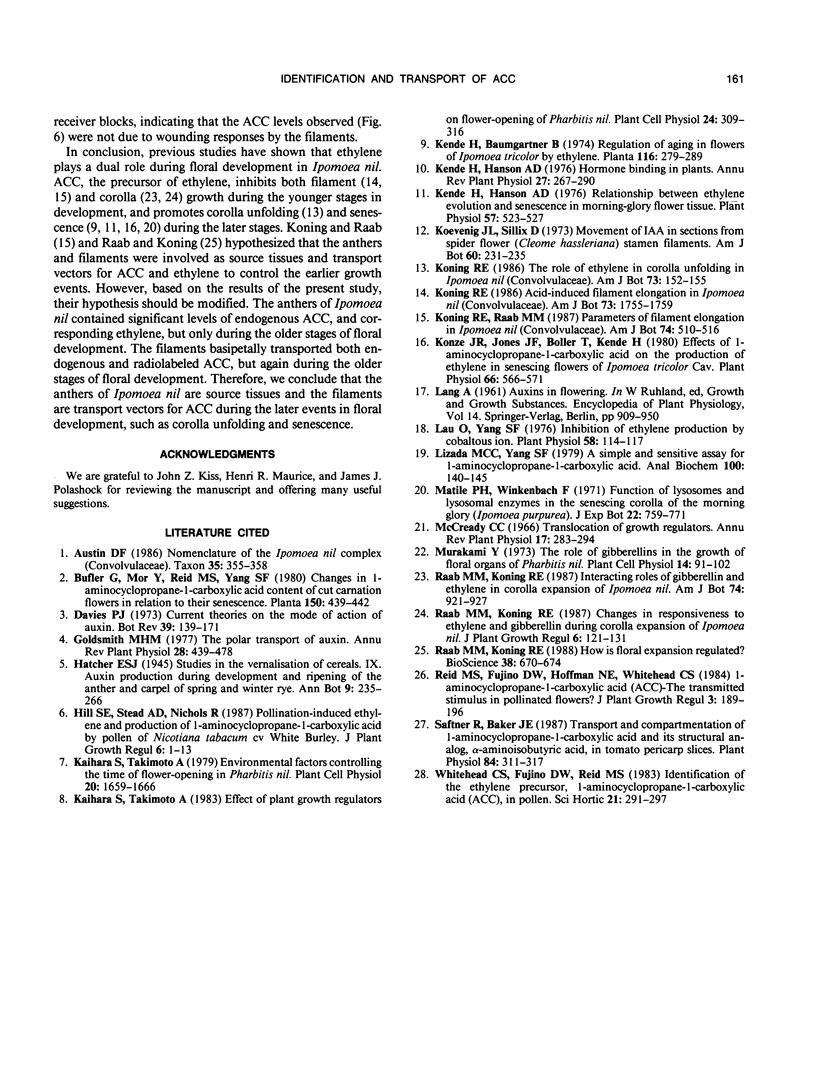Abstract
Filament and corolla growth in flowers of Ipomoea nil are inhibited by ethylene production. Anthers inhibited filament growth in vitro during younger stages of development even in the presence of the growth promoter gibberellic acid (GA3). To test whether the anthers could be sources of 1-aminocyclopropane-1-carboxylic acid (ACC) endogenous levels of ACC and ethylene production were monitored using gas chromatography. To also test whether the filaments could be transport vectors for ACC the movement of [14C]ACC was assessed by scintillation counting from donor agarose blocks, through filament sections, and into receiver agarose blocks. While ACC levels fluctuated in anthers 87 to 21 h before anthesis, anthers contained increased levels of ACC from 15 to 6 hours before anthesis. Ethylene production also fluctuated but peak levels were shifted about 6 hours closer to anthesis than ACC levels within the anthers. Both ACC and ethylene levels in filaments showed fluctuations similar to those in the anthers. [14C]ACC movement became increasingly basipetal during development. Older stages showed greater polar [14C]ACC efflux rates, while all stages showed constant polar influx rates. Low levels of endogenous ACC were transported basipetally from the anther through the filament into agarose blocks at all stages of development. Corresponding levels of endogenous ethylene production remained constant between the various stages during ACC transport. We have evidence that stamens of I. nil have a role as source tissues and transport vectors for ACC, to stimulate corolla growth, such as corolla unfolding and senescence.
Full text
PDF




Images in this article
Selected References
These references are in PubMed. This may not be the complete list of references from this article.
- Kende H., Hanson A. D. Relationship between Ethylene Evolution and Senescence in Morning-Glory Flower Tissue. Plant Physiol. 1976 Apr;57(4):523–527. doi: 10.1104/pp.57.4.523. [DOI] [PMC free article] [PubMed] [Google Scholar]
- Konze J. R., Jones J. F., Boller T., Kende H. Effect of 1-Aminocyclopropane-1-Carboxylic Acid on the Production of Ethylene in Senescing Flowers of Ipomoea tricolor Cav. Plant Physiol. 1980 Oct;66(4):566–571. doi: 10.1104/pp.66.4.566. [DOI] [PMC free article] [PubMed] [Google Scholar]
- Lau O. L., Yang S. F. Inhibition of ethylene production by cobaltous ion. Plant Physiol. 1976 Jul;58(1):114–117. doi: 10.1104/pp.58.1.114. [DOI] [PMC free article] [PubMed] [Google Scholar]
- Lizada M. C., Yang S. F. A simple and sensitive assay for 1-aminocyclopropane-1-carboxylic acid. Anal Biochem. 1979 Nov 15;100(1):140–145. doi: 10.1016/0003-2697(79)90123-4. [DOI] [PubMed] [Google Scholar]
- Saftner R. A., Baker J. E. Transport and Compartmentation of 1-Aminocyclopropane-1-Carboxylic Acid and Its Structural Analog, alpha-Aminoisobutyric Acid, in Tomato Pericarp Slices. Plant Physiol. 1987 Jun;84(2):311–317. doi: 10.1104/pp.84.2.311. [DOI] [PMC free article] [PubMed] [Google Scholar]



